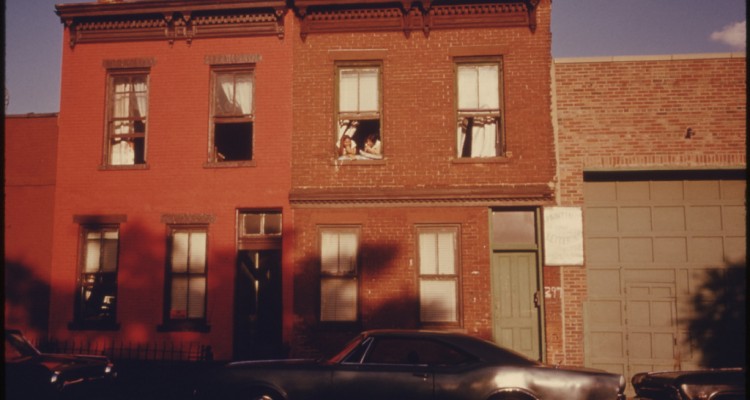There are four different shades of brick that I can see from the second-story window as I sit on your bed.
The first is the oldest and brightest, a vermilion terracotta exoskeleton for the neighboring 19th century tenement. The next is a dark weathered brick, cohabitating with stones in the divisional wall of the courtyard below. Furthest away is the institutional citrine brick of a nearby public housing unit. Diagonally across from that is the modern brick of a newer residence.
Did you know that the name for the most commonly used brick is “common brick”? I did. I don’t remember when I learned so much about bricks.
It was probably sometime between birth and the first time I kissed you.
I never noticed any of these bricks before today, but things are so much easier to see in the daylight. It is usually dark when I come here and dark when I leave you. Although I’m not sure if “usually” has a place in that sentence yet. I’ve become wildly unsure of the placement of things, lately. I would be a terrible mason.
Once you spread the mortar, you have to be certain of how to lay the bricks. I’m not a mason, but I assume you should probably be certain long before that. I assume if the foundation isn’t right then eventually everything will crumble. I assume you have to create a pattern. I am not a mason though, so right now all I have are my assumptions.
Approximately eighty percent of buildings in New York City are brick, or brick masonry. This building, the one that we are in — where we are sitting on your bed and I am looking out the window — is not very far from where the Manhattan Brick Works was founded in 1863. A handful of prescient men took advantage of the region’s deposits of fire clay, transforming them into fire bricks. Fire clays have certain refractory properties, which allow them to retain their physical shape and chemical identity when subjected to high temperatures.
Sometimes I think you are made of fire clay. Under incendiary circumstances my fingers trace the smooth grooves of your impeccable mortar. You flare and radiate. You combust, but preserve your state. I don’t know enough about science to understand how this is possible, but I don’t want to know.
I am content with your beautiful mysteries.
There is no correlation between the metaphorical brick wall and a real world example of one. They are certainly both strong and attractive, but here in the real world brick walls aren’t immobile. They are kinetic. They understand how to manipulate energy in ways mere humans never could.
They know how to keep things cool. They know how to heat things up. From a distance they might seem impenetrable, but bricks are, in fact, composed of some of the softest materials on earth. Have you ever held gentle silken clay against your cheek? Did it cool you down? Did it heat you up? Did it do both at once in a way that you don’t know enough about science to understand?
I am still sitting on your bed and looking out the window. You get up to pour your tea. You must know that every second that I am looking out the window is a small sacrifice. You must know that when I look at you I don’t want to look away. Sometimes I just have to because I am not made of fire clay.
It is kind of you to let me sit on your bed and look at your bricks. It started just as a small glance around your apartment, but it gradually moved through your window and outside. Sometimes things can begin so strangely. I think we both know I am searching for words. I haven’t found the right ones yet.
It can be difficult for me to talk to someone who nearly always says exactly what she means to say — in so effortless and eloquent a manner. I’m more used to telling people one thing so that they will understand something else.
I am telling you one thing so that you will understand something else.
When you look at a brick wall you should admire its united beauty, but you should also recognize that it is composed of discrete pieces, each with its own history. They were all here before me.
You return with your tea. Did you know in New York City, buildings must be built with severe weather grade brick, so they can withstand the variations of temperatures in the Northeast? Did you know how cold it is in here?
Did you know that if I look directly into your eyes I will burn?
I am still sitting on your bed and looking out the window. You sit down on the bed again. I want to know if you are looking out the window now too. I look at you, but it’s hard to tell where someone is looking when you are avoiding their eyes. You ask me what I am thinking about. Did you know there are four different shades of brick that I can see from the second-story window as I sit on your bed?






